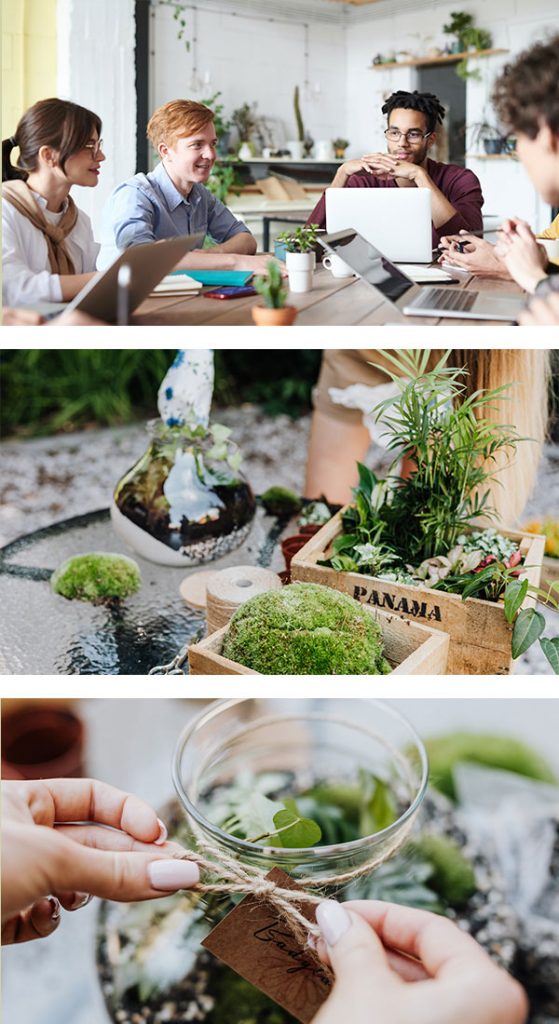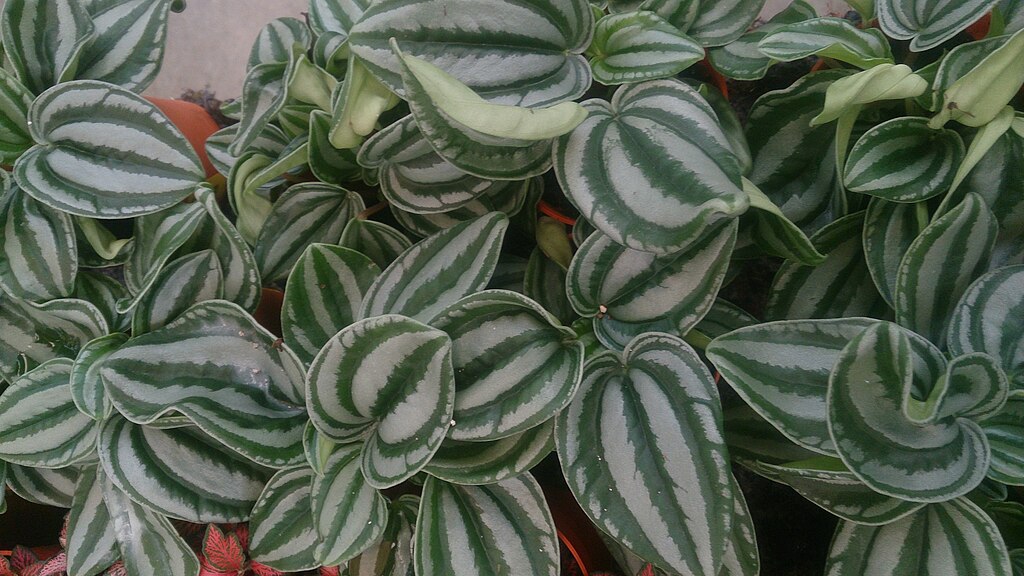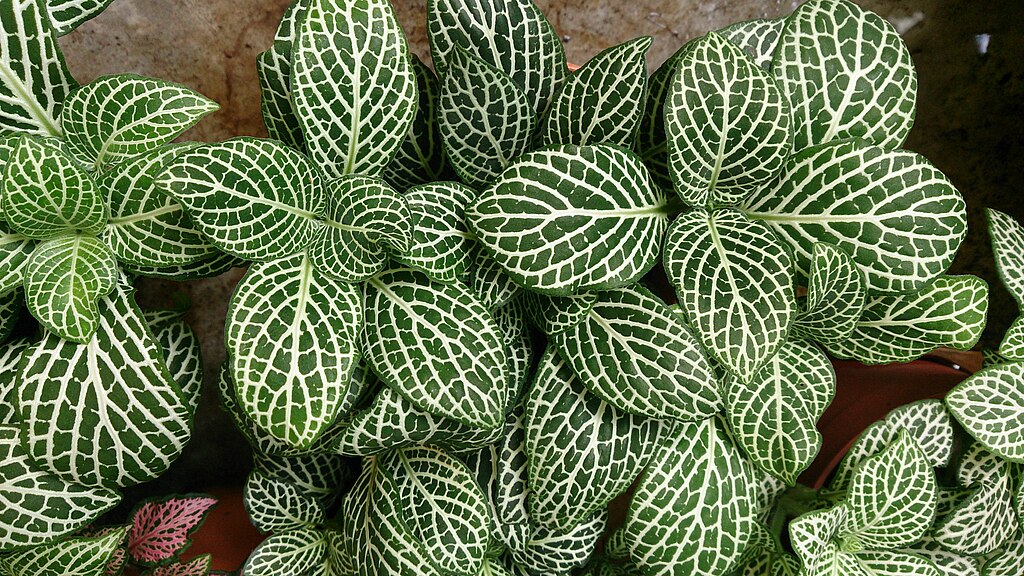Regardless of your taste, your choice of terrarium plants is an aggregate of several factors. So, to get the best results for your decor aids, you need plans. What plans?
First, know the factors that might make or mar your efforts. Fortunately, we have some for you in this article.
We even did one better by providing a list of the low-maintenance plants that meet the factors considered. Amazing, eh?
Let’s get into the details then.
3 Crucial Factors That Can Make Or Mar Your Terrariums Plants
The Container
The build of your terrarium means everything to your plant. For a start, it determines if your greens are as comfortable as they would in their natural habitats.
Secondly, the container you use also determines crucial details, such as drainage, humidity, and ventilation.
In essence, your choice container determines the beauty of your mini-greenhouse and its effectiveness.
The Plant Itself
Even with the best container, you yet need terrarium-specific plants. Huh?
Not all plants fit micro gardening. So, you might want to do your research on that.
That said, the best plants for your terrarium are the slowly-growing kinds. What kinds?
Here are the broad categories of terrarium-compatible greens:
- Airplants
- Carnivorous plants
- Dwarf palms
- Ferns
- Succulent
- Peperomia
Maintenance And Tools
Once you settle on the container to use and what plant you want, the next step is mapping out a maintenance schedule.
About the plan, start from the substrate in your terrarium. Are the substrates nutrient-rich? If not, what can you do? Would you experience drainage problems?
Also, you should consider your plant and how much care and time you have to give. How often would you trim and water it?
In the end, your plans would help you know what tools to get. More importantly, you would have the roadmap to achieve a beautiful mini-greenhouse.
So, what plants meet all the requirements stated?
7 Low-maintenance Terrarium Plants You Should Consider
Peperomia caperata

Peperomia caperata is one of the numerous cultivars of its species. It fits your terrarium because it is quite a slow grower.
Beautifully, Peperomia caperata comes in shades of green or green dotted with red. As such, they make for exciting home decor.
Regarding maintenance, Peperomia caperata only need:
- Little watering, and
- Indirect sunlight.
For the lighting requirements, the light could be bright or low. As long as the source is indirect, your Peperomia caperata will survive.
Button Ferns
Button ferns, also called Pellaea rotundifolia, are button-shaped with green foliage. They are particularly drought resistant. As such, they fit any terrarium – especially the closed types.
Nevertheless, button ferns need moderate to adequate maintenance schedules. They can be delicate when issues such as mold rot occur.
To prevent such, here is what you should do for your button ferns:
- Only water the plant once a week, and
- Set it in shaded areas or indirect light conditions.
Pothos

Pothos, also called Epipremnum aureum, come in green shades with white colorings. Such beauty will come in handy for your terrarium and your overall decor goal.
Also, Pothos are almost indestructible. That is because the plant strife even in negligence.
Nevertheless, trim your Pothos occasionally. Else, the plants would overcrowd the terrarium and make the space unpleasant.
What other requirements should you appropriate?
- Pothos only require little watering, and
- They need indirect lighting conditions.
Furthermore, ensure that the light source is bright. Else, your Pothos might suffer stunted growth.
Artillery Ferns

Artillery ferns, also called Pilea microphylla, got their name from the nature of their seed dispersal. Do you know that these plants make a popping sound (like a gun) when propagating their seeds?
Interesting, eh?
By the nature of seed propagation, Pilea microphylla is not even a traditional fern. Nevertheless, they belong to the group and are almost effortless to grow.
For the best outcome, ensure these conditions for your artillery ferns:
- Avoid overwatering; mid-level watering is enough – say twice a week, and
- Place these plants under indirect lighting conditions.
Spike Mosses

Spike mosses, also called Selaginellas, are beautiful aids for your decors. They come in different colors, patterns, and shapes.
Another thing is that Selaginellas are not actual mosses. They are more like ferns because they are tropics and low-shade lovers.
Thanks to those features, spike mosses are a natural fit for your closer terrariums.
What else should you know?
Selaginellas love moisture. Even at that, don’t overwater the plants. Instead, water only when the surface soil is dry.
Prayer Plant

The Prayer plant, also called Maranta leuconeura, got its name from the fold of its leaves. How?
At night (or during low-light conditions), the leaves of a prayer plant fold as you would your palms while praying. When in that state, the white dots on the green foliage come to the fore. That can be beautiful!
Asides from the white dots, a prayer plant yet has red venations. Those various coloring will add to the beauty of your terrarium.
About maintenance, here are the things you should know:
- Prayer plants love warm areas, so keep them away from chilly areas,
- They prefer indirect, medium lighting conditions, and
- Water your Prayer plants often – especially in the spring and summer months.
Polka Dot Plant
Polka dot plant, also known as Hypoestes phyllostachya, is one you should consider for its beauty and low-care routine.
This terrarium plant comes in cheerful and attractive colors. Not only that. They have markings that make for contrasting and behavior backgrounds.
However, you might have to trim your Hypoestes phyllostachya often. That is because the plant can eventually outgrow your terrarium.
About maintenance, you should note these:
- Place your polka dot plant in indirect, bright lighting conditions,
- Water the plants regularly, barring the winter months.
That’s it – the end of our list.
Verdict
Regardless of which plant you finally pick here, you can rest assured that the process will be easy.
However, you should also know that low-maintenance doesn’t translate to no work. You’ll still need to water and trim your plants.
Even when you won’t water or trim, you yet have to check if the plants are growing adequately. Another thing to check is infections and pest infestations.
So, you see: there is yet work to do. But such work is insignificant in contrast to the beauty that your terrarium will bring to your home.
The Best Terrarium Plants You Can Start With
The idea of starting your own terrarium garden seems like a great idea. You get to enjoy a vibe that most homes do not get to enjoy. A vibe so essential that humans will in one way or another, seek it.
Having plant life inside your home adds a different kind of vitality and presence in your home, it is difficult to ignore the essence of it all.
With that said, the hardest part kicks in. There are over 1.5 million species of plants that have been discovered up to this point. Which of these best suits the terrarium you want to build?
Watermelon Peperomia.
Seriously, anyone who doesn’t like watermelon needs to be evaluated for being a psychopath. If you, however, are on the other side that love them, here is a plant species that will always ensure you are well hydrated all year round.
Well, not from consuming this plant, but from the fact that its leaves resemble the skin of a watermelon, but in a darker shade of green complemented by silver.
That, however, is not what makes it perfect for your terrarium. This is a plant that loves moist conditions and only grows up to 8 inches in height.
The Nerve Plant.
From its name, it would be best to guess that this plant was named after the nervous system of an animal had been mapped. It is also a plant that was, and still is, of great use to the people of Ecuador and the Amazon for the herbal properties it carries.
This plant can be used to treat headaches and toothaches, but that is not the reason you want it in your terrarium. The oval shaped leaves are beautifully interspersed by white veins and venules, making for a stunning plant to behold.
As a native of the Amazon, this plant has to be kept in moist conditions with warm air.
The Spiderwort.

This probably is a plant that you need no introduction to as it is fairly abundant across all of America. Seriously, members of this genus can be found anywhere from Northern Canada, all the way to Tierra Del Fuego in Argentina.
This sickly-looking plant is actually quite beautiful to behold. The green plant is absolutely stunning when it is juxtaposed with the purple flowers and yellow petals.
The only grow up to 2 feet tall, but they can live for upwards of 30 years in a terrarium. An individual has been one of the longest living terrarium plants at 53 years!
African Violet.

Like a great number of things representative of the continent of Africa, the vibrant colors of this plant can definitely be used to judge the color accuracy of various digital media. That is the only reason why you should house this plant in a terrarium.
However, the fact that is grows to a mere 6 inches makes it an attractive option not just for a terrarium, but also as a house or office decoration. You only have to provide moist soil and it will do the rest.
Air Plant.

Like a great number of things representative of the continent of Africa, the vibrant colors of this plant can definitely be used to judge the color accuracy of various digital media. That is the only reason why you should house this plant in a terrarium.
However, the fact that is grows to a mere 6 inches makes it an attractive option not just for a terrarium, but also as a house or office decoration. You only have to provide moist soil and it will do the rest.
Baby’s Tears.

… are always a sad sight, no matter the reasons but not in this case. Instead of an actual child crying, the appearance of this plant against the solid planes of civilization make it look like the tear spatters of a child.
The numerous leaves are known for carpeting the area they grow in, which makes it a great plant to use as a base for another plant in the same terrarium. Just imagine the festival of color and vibrancy you can conjure with different combinations.
Starfish Flower Cactus.
Here is another plant that offers a stunning perspective of what plants can do. If you do get to see the art in it, you probably could come up with various award-winning photos or drawings.
The starfish cactus is literally the cactus that you know from all the Westerns you’ve been watching, but with a starfish shaped flower blooming right in the middle of it.
The funny thing is though, unlike a true cactus which will stare down the sun and desert for years, the starfish cactus prefers being brought up in a humid environment.
The fact that it grows painfully slowly is the reason why it makes perfect sense for any terrarium enthusiast.
Prayer Plant.

Forget everything this article says about stunning plants. The writer is easily excitable, but not when it comes to this plant.
If you are looking for a plant that will stun any art connoisseur, then this has got to be it. The different colors and the pattern presenting on each leaf can be thought of as natural Inception; a beautiful drawing, inside another beautiful drawing, inside yet another beautiful drawing.
Oh, and the name, that actually comes from the fact that when the sun goes down, the leaves will actually fold up and look like hands clasped in prayer.
While this is a beautiful thing to witness, it can actually be a great indicator of how well the plant is doing. The closing only happens at night, and will open at dawn. If the leaves don’t open, then the plant isn’t doing well.
If you are looking to get this, it would be best to place it somewhere warm and to keep it watered, especially in spring and summer. Also, don’t expose it too much to the sun.









